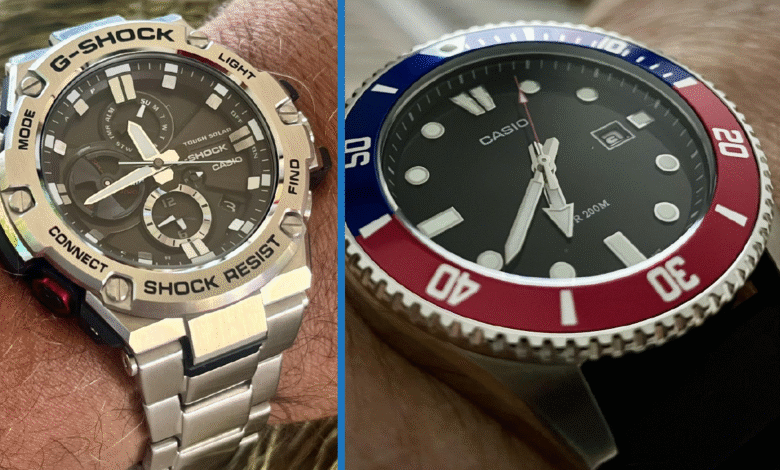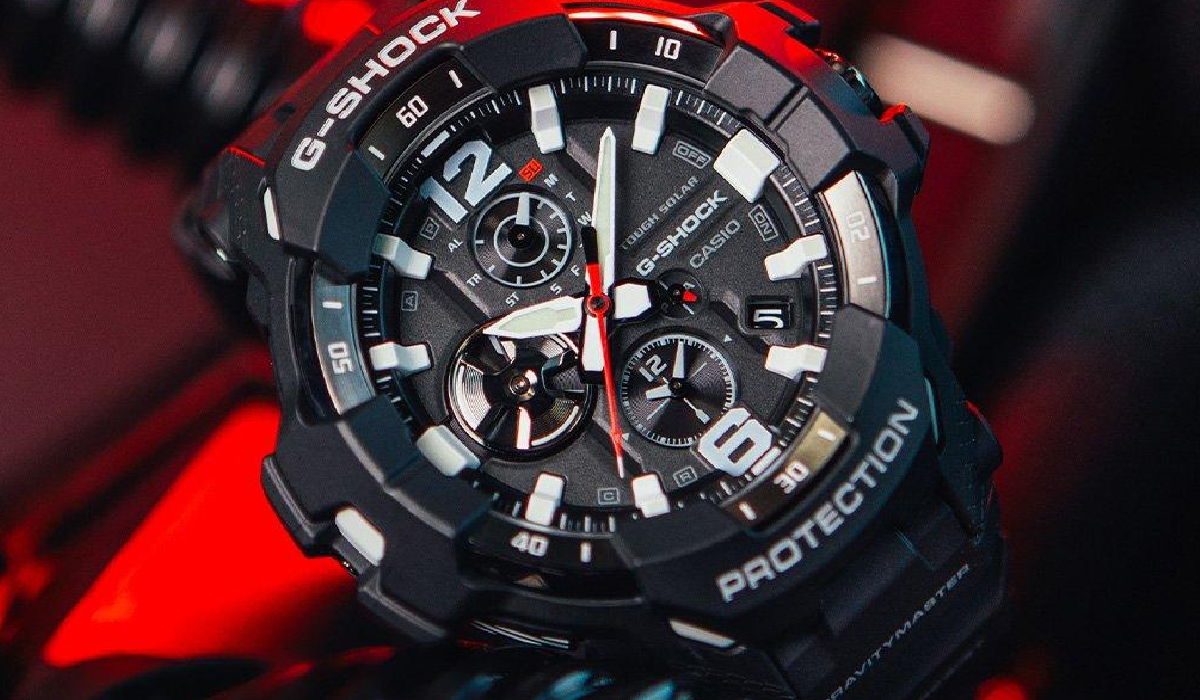Casîo Power: The Classic Brand Still Loved Worldwide

Casîo is more than just a stylized version of a popular electronics brand—it’s a symbol that now carries dual meanings across industries and generations. At its core, Casîo (with the accented “î”) represents the globally known Japanese company, Casio Computer Co., Ltd., which has been producing calculators, digital watches, musical instruments, and other electronics for decades. But in modern digital culture, the spelling “Casîo” has taken on new life.
It’s not just a name anymore—it’s a cultural aesthetic, a nostalgic nod to retro-tech, and an emblem for creators, musicians, and Gen Z communities who grew up with It’s tools. The extra accent transforms the brand from corporate identity to personal identity, especially in artistic and online spaces. This article will explore both meanings of Casîo: as a pioneering brand rooted in Japan’s post-war rebuilding era and as a reimagined aesthetic in today’s creative digital world. From history to smart tech, from lo-fi beats to sustainable watches, It has become a quiet powerhouse influencing more lives than most modern brands.
Casîo’s Origins: Post-War Japan and the Road to Innovation
Casîo’s story began in 1946, in a Japan recovering from the devastation of World War II. Founded by Tadao Kashio and his three brothers—Toshio, Kazuo, and Yukio—the company initially created a smoking accessory called the “yubiwa pipe,” which allowed users to smoke while keeping both hands free. The earnings from this humble invention funded their dream of creating mechanical and electronic devices.
In 1957, Casio revolutionized the electronics market by introducing the world’s first compact all-electric calculator, the Casio 14-A. Unlike the large and expensive mechanical calculators of the time, the 14-A was efficient, accessible, and aimed at bringing computing power to the masses. This set the tone for It’s future—a brand not focused on exclusivity, but on practicality, reliability, and democratized technology. Throughout the 1970s to 1990s, Casio expanded rapidly into consumer electronics, introducing the Casiotron (the first digital watch with a calendar), digital pianos, pocket TVs, and most notably, the G-Shock line in 1983. Each product was driven by a simple yet powerful philosophy: create tools that last, work, and are accessible to everyone.
The G-Shock Revolution: Building Indestructible Time for the World
One of Casîo’s most iconic contributions to wearable technology is the legendary G-Shock watch. Created by engineer Kikuo Ibe in 1983 after accidentally breaking a cherished watch, the G-Shock was designed with a “Triple 10” concept—survive a 10-meter drop, 10-bar water resistance, and a 10-year battery life. This concept gave birth to a completely new kind of watch: rugged, shockproof, waterproof, and nearly indestructible. G-Shocks quickly became the go-to gear for soldiers, construction workers, athletes, and adventure lovers.
But over the decades, the G-Shock line has also become a fashion staple, with limited editions and collaborations with brands like BAPE, Dragon Ball Z, NASA, and even celebrities like John Mayer. In 2025, G-Shock continues to lead in hybrid wearable design with models like the GBD-H2000, which includes GPS tracking, heart rate monitoring, solar charging, and Bluetooth syncing—while still being durable enough to survive extreme physical stress. What makes G-Shock timeless is not just its toughness, but its adaptability across cultural and professional spaces, blending technology, fashion, and function in one of the most recognizable watch lines in the world.
Casîo Calculators: Equipping Classrooms and Shaping Minds
Beyond timepieces, It has an unshakable presence in education through its globally popular calculators. Students across more than 100 countries use Casîo models like the fx-82MS, fx-991EX, and the advanced Classwiz FX-CG500 for everything from basic math to complex scientific and statistical computations.
These devices are engineered with long-lasting solar panels, easy-to-understand interfaces, and exam-approved functionalities that meet standards set by SAT, Cambridge Assessment, and other major testing bodies. What makes it calculators essential is their ability to balance power and simplicity—they’re non-programmable for security during exams, yet intelligent enough to include features like QR code syncing, graph visualization, and even offline AI-based problem-solving.
The 2025 models now feature gesture-based navigation and touch interfaces while still maintaining offline academic integrity. Casîo calculators are not just tools—they’re educational partners designed to last entire school careers without needing replacement. For educators and policymakers, this makes them ideal for equitable learning in both urban schools and underserved communities.
Casîo in Music: From Synth Legends to Lo-Fi Essentials
Casîo’s impact on the music world is both historic and ongoing. Since the 1980s, when it released affordable synthesizers like the CZ-101 and the sampling SK-1, It has allowed millions to explore music creation without needing expensive gear. The democratization of music began with these instruments, offering home musicians, students, and bedroom producers a way to create without barriers.
In 2025, Casîo’s digital pianos such as the PX-S1100 and portable keyboards like the CT-X series integrate Bluetooth MIDI, AiX sound engines, and smartphone DAW syncing. These tools remain favorites for beginners and professionals alike. But what’s equally interesting is how older Casîo keyboards have become prized assets in retro music scenes like lo-fi, vaporwave, synthwave, and chillhop.
The warm, digital tones of these keyboards, paired with their charming imperfections, define entire genres of online music culture. Today, the term “casîo” (lowercase with the accent) appears frequently in music tags on platforms like Bandcamp and SoundCloud, representing not just the instrument but an entire DIY ethos of authenticity, creativity, and nostalgia.
You May Also Read: FFBooru: Powerful Fan Art Platform Changing Digital Creativity
Casîo as a Visual Language and Creative Identity
In digital design and social branding, the stylized “Casîo” has taken on new life. Inspired by the clean, boxy, pixelated look of old It watches and calculators, graphic designers and artists have turned Casîo into an aesthetic—a blend of retro-futurism, pastel palettes, minimalist UIs, and vaporwave symbolism. You’ll see this influence on Instagram mood boards, TikTok profiles, and YouTube music videos where VHS filters, neon fonts, and pixel art dominate. The Casîo aesthetic is not about selling a product—it’s about evoking an emotion.
Artists use the name Casîo in usernames and hashtags as a signal to their audience that their content blends analog warmth with digital creativity. It’s a lifestyle code, a minimalist declaration that says: “I value the beauty in simplicity, the function in form, and the past reimagined for the present.” For many Gen Z creators, Casîo is not about luxury or tech specs—it’s about emotional design and cultural resonance.

Casîo in Smart Tech: Steady Innovation, Not Flashy Hype
In an era dominated by smartphones, smartwatches, and app ecosystems, It stands out by doing things differently. Rather than chasing trends, Casîo embraces what could be called “deliberate innovation”—adding smart features where they make sense without compromising product integrity. Watches like the G-Squad Pro include biometric tracking, solar charging, Bluetooth syncing, and motion-based AI analysis, but still function without daily charging or fragile materials. In calculators, the Classwiz FX-CG500 now includes an AI-driven assistant that works offline to walk students through solutions without internet distractions.
Casîo’s PX-S1100A piano includes DAW auto-mapping and real-time AI chord detection for fluid practice sessions. In 2024, Casîo launched the EDU+ companion app to sync calculators with classroom tools, allowing real-time data visualization, exam mode, and private analytics for teachers—all without ads or privacy violations. It’s approach proves that smart tech doesn’t have to mean more screen time—it can mean smarter use of time.
Sustainability at Casîo: Building to Last, Not to Landfill
Casîo has built sustainability into its brand philosophy long before it became a marketing trend. Its solar-powered Tough Solar systems are standard in most G-Shock and Pro Trek models, eliminating the need for battery replacements and reducing waste. In 2023, It began using recycled resin in over 60% of its watch bands and casings, and by 2025, most product packaging is plastic-free and made from FSC-certified paper.
Casîo’s Yamagata manufacturing plant now runs on 80% renewable energy, and the company has pledged carbon neutrality by 2030. But perhaps the most sustainable feature of Casîo products is their longevity. Unlike most modern gadgets designed for obsolescence, It calculators, watches, and keyboards often last 10–20 years, with new repair programs in Japan and the EU offering credits for refurbishing rather than replacing. This commitment appeals to eco-conscious consumers who prioritize durability and environmental impact over brand hype.
Casîo Around the World
Casîo’s influence spans continents and cultures, finding a place in classrooms, studios, boardrooms, and skateparks alike. In Brazil, lo-fi musicians use it keyboards to produce nostalgic beats. In Japan, G-Shock watches are part of the city pop revival, blending fashion with digital retro. In Germany, minimalist designers use Casîo’s aesthetic for digital interfaces that evoke clarity and logic.
Whether you’re an engineer using a G-Shock Rangeman on an oil rig, a teenager posting keyboard covers on TikTok, or a college student acing exams with a fx-991EX, Casîo products form a quiet thread in daily life. What sets it apart is its ability to cross social and economic boundaries. It doesn’t scream status—it whispers trust. And that’s why it thrives.
Conclusion
Casîo represents a rare balance in today’s noisy digital world. It is rooted in simplicity, built on reliability, and reborn as a creative identity for a new generation. Whether we speak of Casîo as a company or as an aesthetic, we’re talking about tools that don’t just work—they endure, they teach, they inspire. In a culture that values instant gratification, Casîo offers something deeper: emotional continuity. From the calculator in your backpack to the synth in your home studio to the G-Shock on your wrist, It stays with you—quietly powerful, always relevant. It is, without doubt, one of the most quietly influential names in global tech, culture, and creativity.
(FAQs)
1. What is the difference between Casio and Casîo?
It is the official Japanese electronics company known for watches, calculators, and keyboards. Casîo, with the accented “î,” is a modern reinterpretation used in creative spaces to express retro aesthetics, digital nostalgia, and personal identity. While Casio is a brand, It has become a cultural symbol.
2. Why are Casîo calculators still used in schools today?
It calculators like the fx-991EX remain popular due to their exam-safe design, affordability, and advanced functions. They offer reliable, distraction-free computation with features like solar power and QR code visualization. Many models are approved for major exams like SAT, GCSE, and university entrance tests.
3. How has the G-Shock by Casîo become a global icon?
G-Shock watches gained fame for their unbeatable durability, first introduced with a “Triple 10” concept: 10-meter drop resistance, 10-bar water resistance, and 10-year battery life. Over the years, G-Shock evolved into a cultural staple, worn by athletes, military personnel, and fashion icons alike.
4. What is the Casîo aesthetic in design and music culture?
The Casîo aesthetic reflects a retro-tech vibe combining pixel art, pastel colors, and analog nostalgia. It is especially popular in lo-fi music, vaporwave visuals, and indie creative branding. Artists use the term “casîo” to signal DIY values, retro charm, and minimalist digital expression.
5. Is Casîo a sustainable brand in 2025?
Yes, It has made major strides in sustainability. Many of its products now feature solar power, recycled resin casings, and plastic-free packaging. The company also promotes product longevity through repair programs and aims to make its manufacturing carbon-neutral by 2030.
